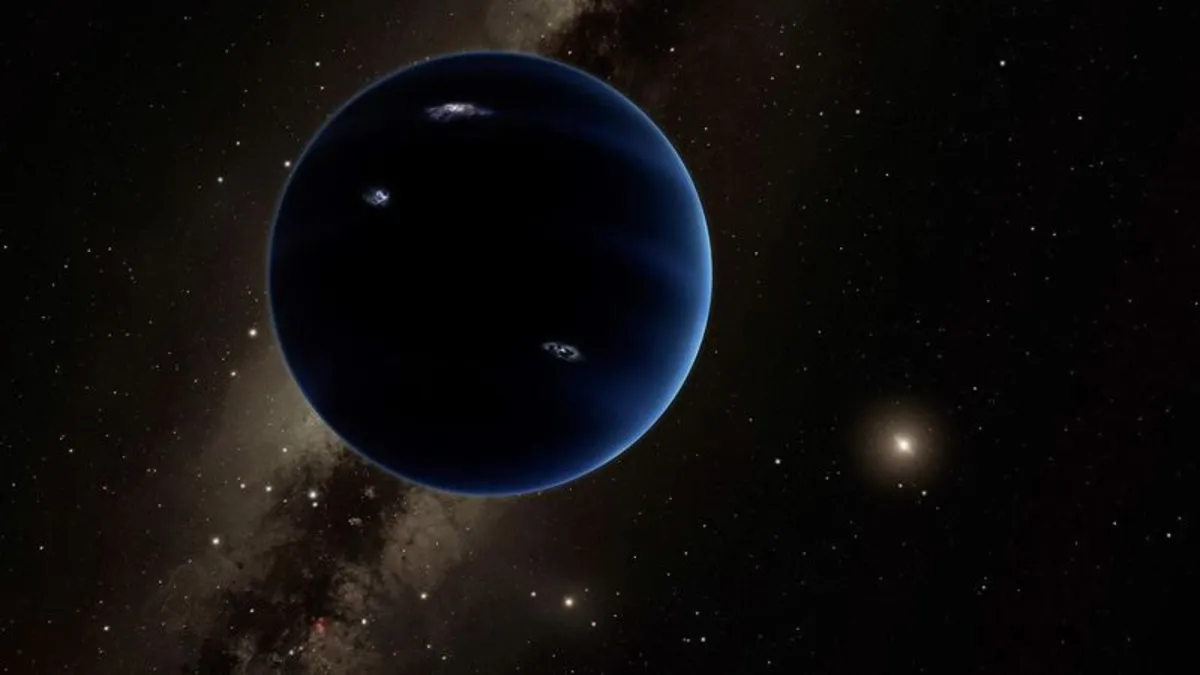
The ongoing quest to uncover an unknown planet within our solar system has captivated astronomers for over a century. A recent study has introduced a potential new contender, referred to as Planet Y. Although this planet has yet to be detected directly, its existence is inferred from the tilted orbits of certain distant objects located in the Kuiper Belt—a vast region of icy bodies beyond Neptune's orbit.
According to the researchers, something must be causing these orbital disturbances. "One explanation is the presence of an unseen planet, probably smaller than Earth but larger than Mercury, orbiting in the deep outer solar system," explained lead author Amir Siraj, an astrophysicist and doctoral candidate at Princeton University. "This paper is not a discovery of a planet, but it certainly identifies a puzzle for which a planet is a likely solution." The findings were published in the journal Monthly Notices of the Royal Astronomical Society: Letters.
Planet Y adds to a growing list of hypothetical planets theorized by scientists in recent years. Each proposed planet has slightly different characteristics, yet they are collectively believed to be hiding within the Kuiper Belt, a region that also includes Pluto, which was reclassified as a dwarf planet in 2006. The emergence of so many candidates for a "ninth planet" arises from the Kuiper Belt’s remote and dark nature, making observations challenging and often incomplete.
Fortunately, advancements in technology, particularly with the upcoming Vera C. Rubin Observatory, promise to enhance our understanding of this elusive region. The observatory is set to embark on a 10-year survey of the night sky, which could lead to significant discoveries. "I think within the first two to three years, it’ll become definitive," Siraj stated. "If Planet Y is in the observatory's field of view, it will be able to find it directly."
The search for an additional planet began after the discovery of Neptune in 1846, leading astronomers to seek a Planet X. This term was popularized by astronomer Percival Lowell, who suggested that anomalies in the orbits of Neptune and Uranus were indicative of a distant body. When Pluto was discovered in 1930, it was initially hailed as Planet X, but further analysis revealed it was too small to account for the irregularities in the orbits.
The quest was reignited in 2005 when astronomers, including Mike Brown from the California Institute of Technology, discovered Eris, a Kuiper Belt object slightly larger than Pluto. This discovery ultimately led to Pluto's demotion from planet to dwarf planet status. In 2016, Brown and his colleague Konstantin Batygin proposed their hypothesis on a potential Planet Nine, theorizing that it could be five to ten times the mass of Earth and orbiting far beyond Pluto.
The discussions surrounding Planet Nine and Planet Y are heated within the astronomical community. Siraj emphasized the excitement of the debate, noting, "I think we’re so lucky to be living at a time when these discoveries might be made." He clarified that both Planet Nine and Planet Y could potentially exist simultaneously.
Siraj's exploration into Planet Y began approximately a year ago while investigating the shape of the Kuiper Belt. He noted, "The planets of the solar system have slight tilts up and down, but overall, they almost etch out grooves on a record." However, he found surprising evidence that beyond approximately 80 times the Earth-sun distance, the solar system's orientation appears to be tilted by about 15 degrees, which led to the formulation of the Planet Y hypothesis.
To test their hypothesis, Siraj and his coauthors ran computer simulations incorporating all known planets alongside a hypothetical one. They found that previous hypotheses, such as Planet Nine, did not fit their model, necessitating the introduction of Planet Y. "Planet Y is most likely a Mercury to Earth-mass body, approximately 100 to 200 times the Earth-sun distance, tilted at least 10 degrees relative to the other planets," Siraj explained.
Given the challenges of observing the Kuiper Belt, researchers rely on studying the orbits of a limited number of objects to infer the presence of a planet. In Siraj’s study, the statistical significance for Planet Y's existence is estimated to be between 96% to 98%, indicating strong, yet not definitive, evidence. The Vera Rubin Observatory is expected to discover thousands more Kuiper Belt objects, which will enhance the search for distant planets.
Located atop a towering 2,682-meter (8,800-feet) mountain in Chile, the Vera Rubin Observatory is equipped with the world's largest digital camera and will capture images of the entire sky every three days. "It's a remarkable feat of engineering," Siraj remarked. "This will allow us to create a movie of the universe, with each frame occurring at a three-day interval." Such comprehensive surveys are crucial for locating distant objects and potentially discovering additional unseen planets.
The study sheds light on the intricate dynamics of the outer solar system, with Konstantin Batygin noting that the Vera Rubin Observatory will provide unprecedented clarity regarding the Kuiper Belt's structure. As more data becomes available, astronomers will gain deeper insights into whether the observed tilt of the Kuiper Belt indicates the presence of hidden planets.
Experts like Samantha Lawler and Patryk Sofia Lykawka, who were not involved in the Planet Y research, recognize the implications of the study. They suggest that while definitive evidence for a large, distant planet remains elusive, there is promising evidence for a smaller body that may be influencing the orbits of far-flung Kuiper Belt objects. Lykawka emphasized the importance of conducting surveys of trans-Neptunian objects as they hold vital clues about the formation of our solar system billions of years ago.